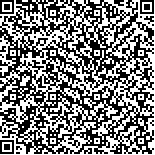| 摘要: |
| 近年来中国迎来了城市化大发展时期,
但城镇水平的提升使得城市面临着严重的空间
重构的问题。为了城市空间的高质量发展、优化
已有的空间品质,城市空间的形态和活力间的关
联问题逐渐被学界所重视,但是目前大多数的
研究在与空间活力关联的研究中的角度上使用
的均是回归分析,其结论仍是对于回归结果的定
性解读,往往可能会因内生性问题而呈现出一定
的虚假相关性。本文尝试借助计量经济学中因
果推断的方法来探究空间形态和活力两者间进
一步的因果关系,选择合肥市金大地1912、罍街
和淮河路步行街三个特色商业街区为案例地,借助ArcGIS平台结合实地调研法和街景图片语义识别法获取道路网、建筑和POI以及绿视率等
控制变量,使用“WIFI嗅探”方法获取人群活力数据,最后通过文献调研法设立“工具变量”的
选取程序,选取“形状因子”和“风载体形系数”作为工具变量,之后在STATA软件中将数据进
行逐次回归。研究结果发现,三个街区的物质空间形态和人群活力具备显著的因果关联性,且显
著性受道路整合度、穿行度、建筑形态测度和业态丰富度等多种要素共同影响,具有“系统性”特
点,同时也发现特色商业街区在城市中作为“孤岛”的定位。研究结果证明了两者的关联性中存在
一定的内生性问题,给出了相应的缓解方法,其对未来城市空间的发展以及活力的提升研究具有
一定的参考价值。 |
| 关键词: 计量经济学 城市空间形态 空间活力 因果推断 关联性 |
| DOI:10.13791/j.cnki.hsfwest.20230412 |
| 分类号: |
| 基金项目:国家自然科学基金青年项目(52008143);安徽省哲
学社会科学规划项目(AHSKY2021D74);合肥工
业大学哲社培育智库研究专项(JS2021ZSPY0034) |
|
| A Study on the Causal Relations Between Spatial Form and Vitality of Characteristic Commercial Blocks from the Perspective of Econometrics: A Case Study of Hefei City |
|
KONG Ziran,XIAO Jiaqi,XUAN Wei,XIA Yongjiu
|
| Abstract: |
| In recent years, since the reform and opening up of China, the level of urbanization
has been increasing at a percentage level per year, and the number of its urban population has
been increasing relative to the urban and rural population. The increase in urban population and
urbanization rate has led to a rapid change in the spatial and landscape pattern of cities. As a result,
China has entered a period of great urbanization, the speed of urban development has accelerated,
the space has changed rapidly, and many super-high buildings and large building clusters have
emerged one after another, making the city face the problem of spatial reconfiguration. And with the
expansion of economic scale, various characteristic commercial districts are emerging in the city.
As the business card of the city and the symbol of cultural heritage, the study of the vitality of the
characteristic commercial districts is of great significance.
As the material manifestation of spatial structure, spatial form is closely related to human
vitality. To study vitality from urban form and explore the correlation between them to further
enhance vitality is an important way to promote the orderly development of urban spatial structure
and optimize spatial quality. With the gradual shift of the goal of urban development to people centeredness and the advent of the Internet information era, the academic community has been
able to adopt new methods to further explore the correlation between the two. In the past, there are
various perspectives on the correlation between the two, one is to directly analyze the correlation
between the quantified morphological indicators and spatial vitality; the other is to first measure the
morphology and then propose the hypothesis of vitality and verify it through the measurement of
vitality; the third is to further study the correlation between the quantified perceptual indicators and
morphological indicators based on the trajectory of crowd activities and based on the perspective
of human perception. However, most of the current studies use regression analysis in the study
of the association with spatial vitality, and their conclusions are still qualitative interpretations of the regression results, which may present some spurious correlations due to endogeneity problems. Therefore, this paper tries to further analyze the
problem of “false correlation” caused by the two important factors of reverse causality and omitted variables in the characteristic commercial districts by
using the econometric theory of causal inference. In terms of data acquisition, this paper uses ArcGIS platform combined with field research and semantic
recognition of street images to obtain control variables such as road network, building and POI, and green view rate, and uses “Wi-Fi sniffing” method
to obtain crowd vitality data. After further analysis, two instrumental variables, wind load variable and building shape factor variable, were introduced
through the instrumental variable selection procedure established in this paper to make causal inference on the results, and finally, the data were regressed
in STATA software one by one. The results of the study found that the physical space form and the crowd vitality have positive correlation and significant
causal correlation, and the quantitative description is that a 1% increase in spatial form vitality will increase the crowd vitality by about 0.25%; and in the
process of data analysis, it was found that the correlation and causal correlation with the crowd vitality were only found when the road integration degree, the
penetration degree, the building form measure and the business richness were all integrated together. With this phenomenon, this paper proposes the “system
theory“ of material space form, that is, all elements are part of the system and are interrelated with each other, and should be improved as a whole with the
system as the object.
This paper solves the problem of how to quantify the amount of change in one element that causes a change in another element. For example, there may
be more parts of the spatial morphology system that can create vitality, which can be further explored from more contents in the future; we can also control
more environmental variables to make the conclusion more precise, and use other methods in econometrics to explain the causal association, and compare
the advantages and disadvantages of different methods to further enhance the validity and persuasiveness of the conclusion. |
| Key words: Econometrics Urban Spatial Morphology Spatial Dynamism Causal Inference Correlation |


